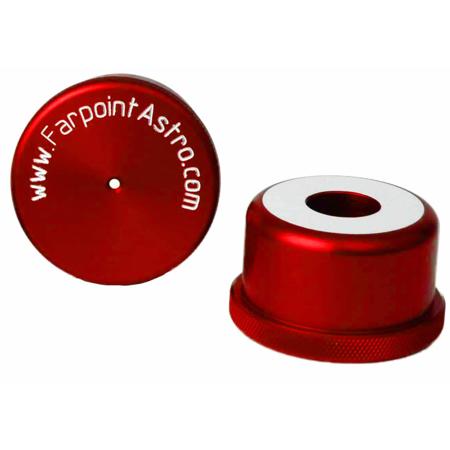
This item is no longer available.
Review Summary
2017-03-21T10:11:04
Much better than the stock collimator shipped with the scope , clearer reflected image.
RICHARD D.
2 inch
Red
Aircraft grade aluminum
Newtonian telescope system
Farpoint warranty
022099905899
Clearer image
By RICHARD D.
Much better than the stock collimator shipped with the scope , clearer reflected image.
Far Point FP261 is Far Reflective Cheshire Collimator red in color. The chesshire collimation device is the simplest, most intuitive tool for adjusting the primary mirror collimation in a Newtonian telescope system. In addition, the chesshire is relatively insensative to wiggle or slop in the focuser. Using the cheshire in conjunction with single beam laser collimator is suggested.
First use the laser to adjust the alignment of the secondary mirror, then adjust the primary mirror alignment using the cheshire. Farpoint makes the cheshire in 1-1/4 and 2 inch sizes. Each chesshire is machined from aircraft grade aluminum on precision CNC lathe to exacting tolerances. They are then polished and hard anodized for a superior appearance and durability. The grip ring is knurled for a sure handhold.
Each cheshire includes four primary mirror marking triangles and an alignment template for applying the triangles onto mirrors up to 12.5" diameter. The template also has metric sized marks for import telescopes as well. For those with larger mirrors, a larger templates for sale or a free pattern download for those who wish to print their own. To use the cheshire collimation system, a reflective triangle center "spot" is applied to the primary mirror in a one-time application process.
Once applied, all one needs to do in order to align the primary mirror is insert the collimator into the telescope eyepiece holder, look through the sight hole and adjust the primary mirror collimation knobs to center the reflective triangle in the image of the white ring projected by the collimator. The system works in daylight or and night with the aid of a dim astro-flashlight aimed down the telescope tube.